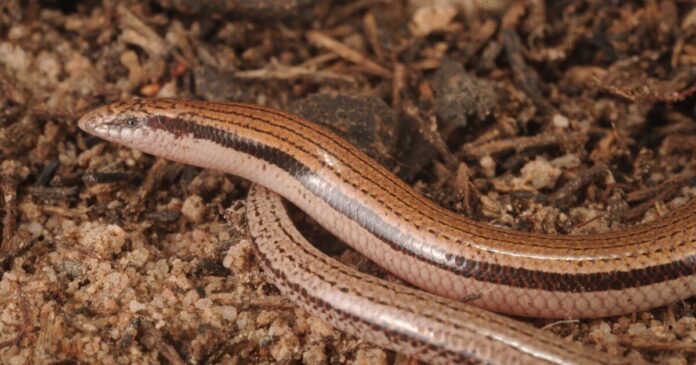We’d like to welcome this curious armless burrowing lizard into the New Species Hall of Fame. Despite being built for life underground, in the end this slider skink was no match for scientists who had searched for a decade to confirm its existence.
Australian Wildlife Conservancy (AWC) ecologists have announced the formal identification of this snake-like lizard as a new reptile species, following two specimen captures a decade apart. Both were found in the Pungalina-Seven Emu Wildlife Sanctuary in the Gulf of Carpentaria on Yanyuwa and Waanyi-Garawa country, a fascinating remote part of Australia that scientists believe holds many more undiscovered species.
Eric Vanderduys/AWC
“As one of the least biologically surveyed areas in Australia, we still have lots to learn about biodiversity in the Gulf,” said Dr. Eridani Mulder, AWC Senior Wildlife Ecologist. “Every record, even of something as inconspicuous as a tiny sand-dwelling skink, helps us build a more complete picture of these ecosystems.”
“So far, this new species of little lizard has only been recorded at Pungalina-Seven Emu, so it’s vitally important that we continue to look after this place,” she added.
Described as a secretive, sand-dwelling skink, the limb-challenged lizard has officially been named Lerista munuwajarlu, inspired by the local Garrwa language – “munuwa” translating as “no” and “jarlu” meaning “arm.”
The Pungalina-Seven Emu Wildlife Sanctuary has become a rich wildlife spot, with scientists working to reduce the presence of feral animals and safeguard it from catastrophic fires. This elusive skink was first noticed during a 2012 fauna survey, which at the time caught the attention of researchers because of its unique two-toe configuration on its only two limbs.

A decade of searching for a second individual – in order to confirm that a new species, not just a genetic mutation, had been found – saw scientists all but give up on seeing another one. Until four researchers from the Australian National University chanced upon one. Genetic analysis confirmed the skink was a separate species but related to existing lizards in the Lerista genus found throughout northern and eastern Australia.
The discovery underpins the importance of fieldwork in identifying new animal species – particularly ones like this that are built for burrowing and keeping out of the way of another animal type, humans.
The new species has been described in the journal Zootaxa.
Source: Australian Wildlife Conservancy


